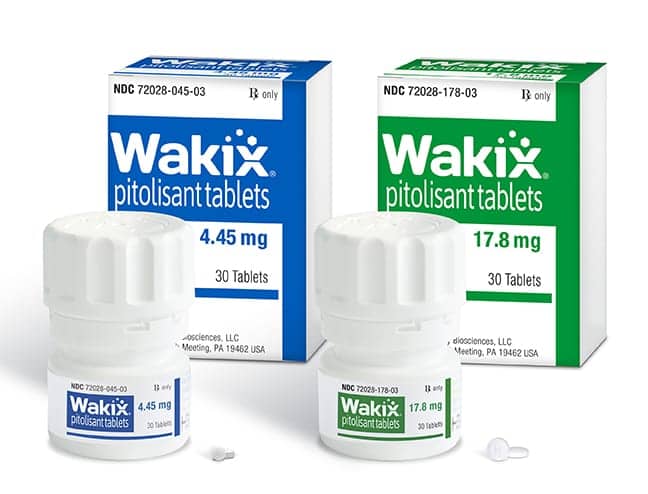Harmony Biosciences Holdings Inc announced results of a post-hoc analysis from the pivotal data evaluating the clinical impact of WAKIX (pitolisant) on the reduction of excessive daytime sleepiness (EDS) and cataplexy in adults with a high burden of narcolepsy symptoms. The analysis was presented as a poster at SLEEP 2022.
“The results from this post-hoc analysis of data from randomized, controlled trials in the clinical development program for WAKIX presented at SLEEP 2022 reinforce the clinical effectiveness of WAKIX in patients with a high burden of narcolepsy symptoms,” says Harmony’s chief medical officer, Jeffrey Dayno, MD, in a release. “Clinical impact, quantified through effect size metrics, lends another perspective on the efficacy profile of WAKIX, especially when assessed in patients with high symptom burden.”
The poster presents a post-hoc analysis of pooled data from patients in the pivotal clinical trials with WAKIX who had a high burden of excessive daytime sleepiness and cataplexy. The data were pooled from HARMONY 1 and HARMONY CTP, two randomized, placebo-controlled seven- and eight-week studies in adult patients with narcolepsy from the clinical development program for WAKIX. Patients enrolled in the trial were individually titrated over a three-week period, with a potential maximum dose of 35.6mg/day, after which the dose remained stable.
Three independent patient subgroups were analyzed based on the following criteria for high burden of narcolepsy symptoms:
- High burden of EDS as defined by an Epworth Sleepiness Scale (ESS) baseline score ≥16 (n = 118; pitolisant, n = 60; placebo, n = 58);
- High burden of EDS as defined by a sleep latency at baseline ≤8 minutes on the Maintenance of Wakefulness Test (MWT) (n = 105; pitolisant, n = 59; placebo, n = 46); and,
- High burden of cataplexy as defined by a baseline frequency of ≥15 cataplexy attacks per week (n = 31; pitolisant, n = 20; placebo, n = 11).
The clinical impact of a treatment can be quantified using effect size metrics, including Cohen’s d (the standardized drug-placebo difference for an effect) and number needed to treat (NNT; number of patients that need to be treated with study medication instead of placebo to achieve a specific outcome for one additional person). Change from baseline to the end of treatment was evaluated for pitolisant compared with placebo in each patient subgroup using these effect size metrics and generated the following results:
- Cohen’s d effect size values for pitolisant versus placebo were 0.80 for ESS, 0.31 for MWT, and 1.31 for weekly rate of cataplexy;
- NNT for pitolisant for improvement in EDS, as defined as a ≥3-point decrease from baseline on the ESS or final score ≤10, was 3;
- NNT for pitolisant for improvement in cataplexy, as defined by a reduction in weekly rate of cataplexy ≥50% decrease from baseline, was 2; and,
- For clinician ratings of “much” or “very much” improved on the clinical global impression of change (CGI-C) assessment, NNT was 5 in the ESS subgroup, 4 in the MWT subgroup, and 3 in the WRC subgroup.



